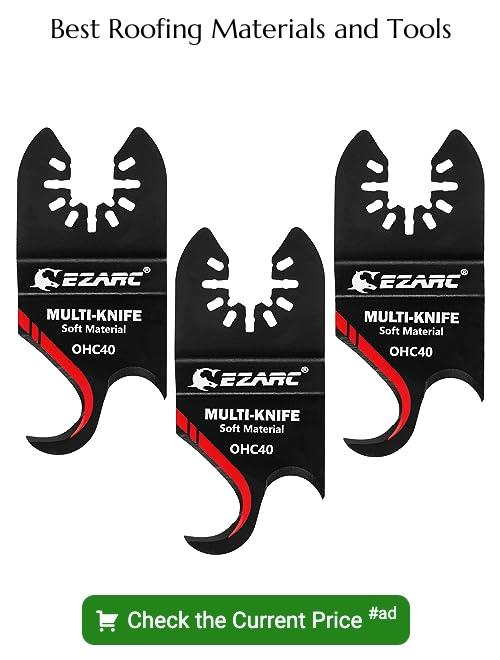Last updated on
Understanding the investment required for a fortified roof equips homeowners with the knowledge to make informed decisions about their property’s safety and resilience.
Key takeaways:
- Fortified roofs withstand severe weather conditions, like hurricanes and tornadoes.
- Key components of a fortified roof include a sealed roof deck, high-wind-rated shingles, reinforced attachments, and metal connectors.
- The cost of a fortified roof depends on material selection, roof complexity, size, contractor experience, and regional factors.
- Benefits of investing in a fortified roof include increased durability, longevity, lower insurance premiums, and enhanced property value.
- Consider local climate when choosing a fortified roof to ensure it meets regional demands and building codes.
What Is a Fortified Roof?

Fortified roofs are specially designed to withstand severe weather conditions, such as hurricanes, tornadoes, and hailstorms. Developed by the Insurance Institute for Business & Home Safety (IBHS), the Fortified roofing program goes beyond standard building codes, focusing on enhancing a home’s resiliency.
Key components of a fortified roof include:
- A sealed roof deck that minimizes water intrusion even if shingles are blown off.
- High-wind-rated shingles that are less likely to tear or be removed during a storm.
- Reinforced roof-deck attachments that use ring-shank nails or screws for stronger anchoring to the home’s frame.
- Metal connectors at critical joints, providing stability against uplifting and lateral forces.
These elements combine to create a roofing system that is more durable and provides increased protection for the home and its occupants.
Factors Influencing Cost of Fortified Roof
Material selection is paramount, as costs can vary dramatically between asphalt shingles, metal panels, clay tiles, or other reinforced materials designed to meet fortified standards.
The complexity of the roof design also plays a role; intricate shapes or multiple levels typically require more labor and materials.
Roof size is directly proportional to expense—larger roofs need more materials and time to install.
The roofing contractor’s experience and region will also affect the rate you pay for labor.
Enhanced features such as additional water barriers, impact-resistant materials, and wind-resistant construction techniques may add to the overall cost but deliver increased protection against extreme weather.
Local building codes and insurance incentives for fortified roofs can influence the final investment, potentially offsetting some upfront costs with long-term savings.
Benefits of Investing in a Fortified Roof
Investing in a fortified roof provides homeowners with multiple advantages that extend beyond the immediate aesthetic enhancement. Firstly, the enhanced durability of such roofs means they withstand severe weather conditions better than standard roofs, significantly minimizing the risk of damage from high winds, hail, and heavy rain.
Secondly, the longevity of fortified roofs is greater due to the high-quality materials and construction standards employed. This long-term robustness translates into fewer repairs and replacements over the lifespan of the roof.
Furthermore, owners of fortified roofs often benefit from lower insurance premiums due to their increased resilience. Insurance companies recognize the reduced risk these roofs present and frequently offer discounts as an incentive for homeowners to invest in fortified roofing systems.
Lastly, the fortified roof’s ability to maintain its integrity in extreme conditions can safeguard the home’s structure and the occupants’ safety, which is priceless. Enhanced protection also helps in preserving the value of the property, thereby providing not only a practical investment in security but also in the financial standing of the property.
Local Climate Considerations
Understanding the climate in which a home is located is crucial when considering a fortified roof installation. The weather patterns significantly affect the materials and construction techniques required to ensure durability and resilience. In regions prone to hurricanes, a fortified roof must be able to withstand high winds, which means the use of stronger, heavier materials and secured fastening systems to prevent uplift.
Contrastingly, areas with heavy snowfall demand a fortified roof with a structure that can support the weight of accumulated snow without compromising its integrity. Additionally, in places where hailstorms are common, impact-resistant shingles may be necessary to protect against damage.
Moreover, the local climate will also influence the roof’s ability to insulate and ventilate, affecting energy costs and the need for additional insulation or ventilation systems. Therefore, homeowners should closely collaborate with contractors experienced in local climate challenges to ensure their fortified roof meets regional demands and building codes, thereby maximizing protection and investment efficiency.
Reduce the Cost of Roof Replacement By Hiring a Reputable and Trusted Roofing Company!
Securing the services of a credible roofing company optimizes your investment in a fortified roof. Experienced contractors ensure proper installation, which is vital for maximizing the roof’s resistance to severe weather conditions. Going for the lowest bid can be tempting, but cost savings upfront may lead to increased expenses due to potential installation errors or inferior materials.
To retain quality while managing costs:
- Research thoroughly – Look for roofing companies with strong portfolios, positive customer feedback, and a proven track record with fortified roofs.
- Verify certifications – Choose a contractor with the appropriate credentials from roofing and fortification programs.
- Solicit multiple quotes – Obtain detailed quotes from at least three reputable companies to compare prices and understand the market rate.
- Assess warranty offerings – Inquire about comprehensive warranties that offer protection against installation defects or material failures.
- Discuss material options – High-quality materials contribute to the roof’s durability. A good contractor should provide clear information about the materials that will be used and their respective costs.
Remember, a strategic approach to contractor selection not only curtails immediate expenses but also minimizes future maintenance and repair costs, safeguarding your roof investment over the long term.





